Module 8: Cities and Wealth in the Americas
1/25
There's no tags or description
Looks like no tags are added yet.
Name | Mastery | Learn | Test | Matching | Spaced |
|---|
No study sessions yet.
26 Terms
Codex
a manuscript in the form of a bound book
Chacmool
A Pre-Columbian Mesoamerican sculptural type depicting a reclining figure supporting itself on its elbows and holding a bowl on its abdomen. The bowl may have served as a receptacle for libations or burned offerings.
Mexia
a term referring to the indigenous people of Mexico, particularly in relation to the Aztec civilization and their cultural heritage.
Superimposition
the placement of one thing over another, typically so that both are still evident
Lintel
In architecture, a horizontal block that spans the space between two vertical supports (posts)

Olmec colossal head, La Venta, Mexico, 1st millennium BCE (Olmec, Mesoamerica)
Very large
all individualized sculptures created by the Olmec civilization, renowned for their facial features and cultural significance.
the eyes seem to be fixed on something far away
they are made out of volcanic rock
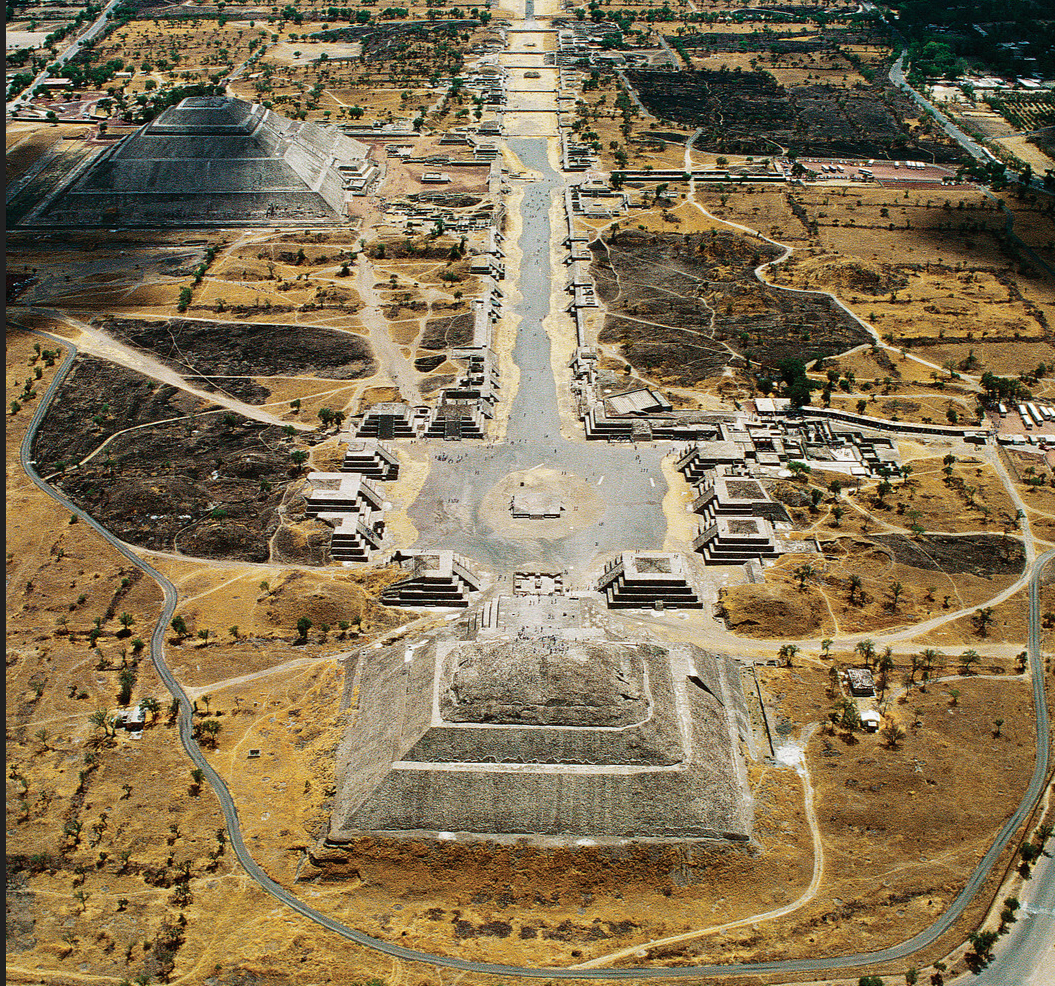
Teotihuacán, Mexico, early 1st millennium CE (Early Mesoamerica)
There is a long ceremonial axial organization for this structure. Kinda like a central plan but outside.
This city was known for its impressive architectural layout, including its pyramids and extensive urban planning.
The Aztecs where really interested in this city (they didnt make it)
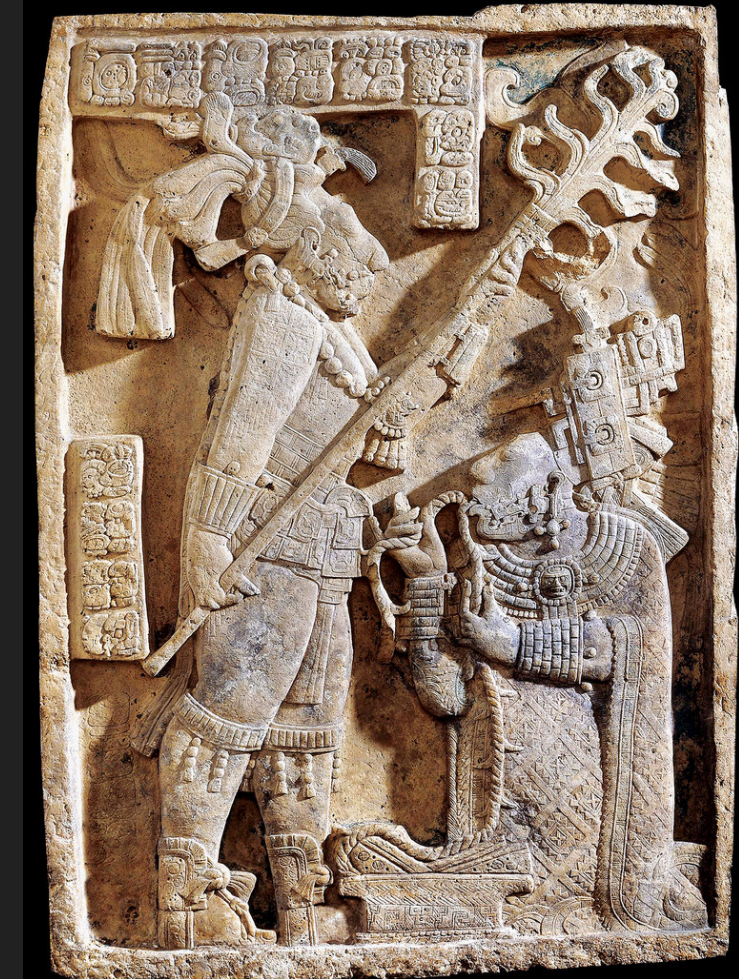
Shield Jaguar and Lady Xooc, Mexico, 8th century CE (Maya, Mesoamerica)
in Yaxchilán, one of the biggest cities in the maya culture
This lintel depicts a powerful scene of a ruler and a noblewoman engaging in a bloodletting ritual, which was significant in Maya culture.
has mayahierglyphic writing
one of the most famoud lintel examples
each lintel showed a story
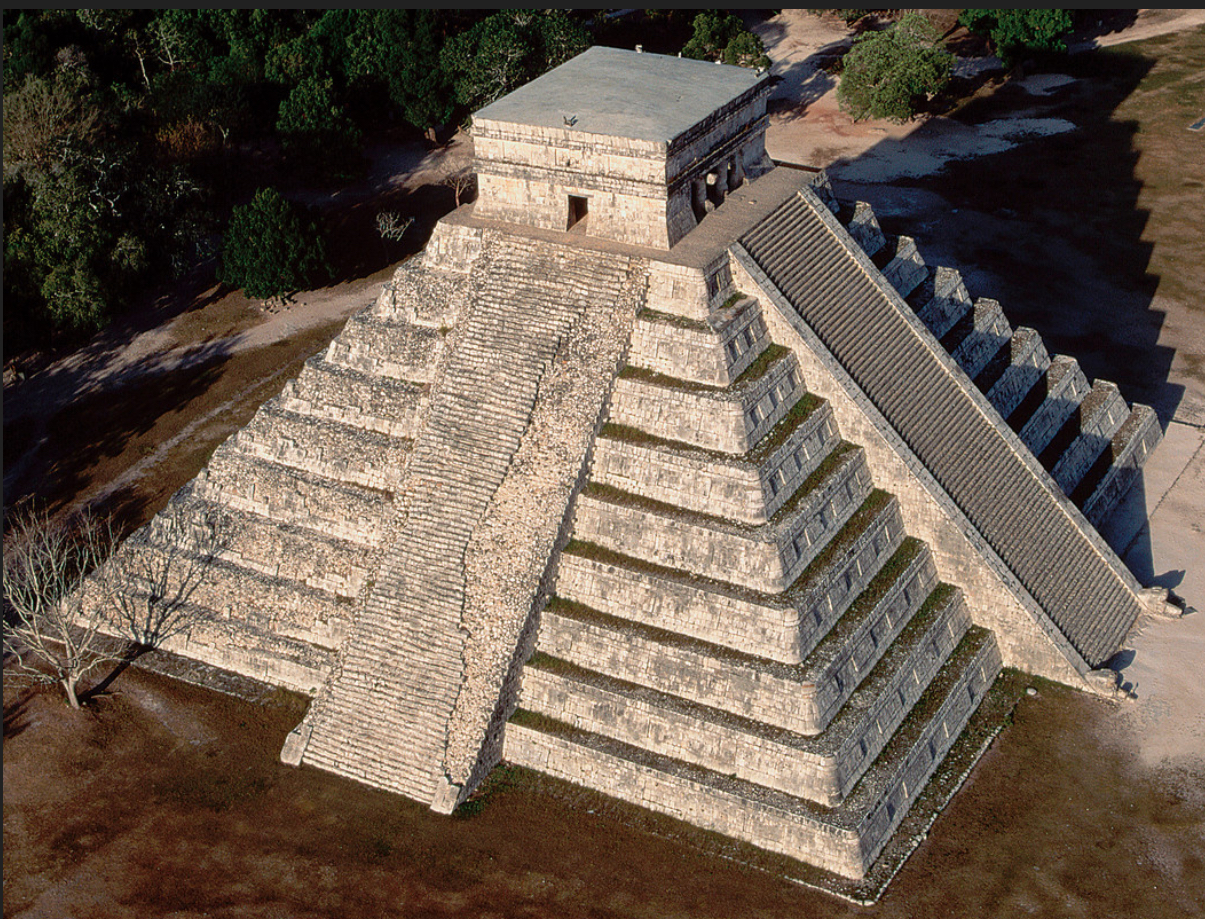
El Castillo, Chichén Itzá, Yucatán, c. 800-900 CE (Maya, Mesoamerica)
4-sided pyramid built up in layers
one of the most famous here
built to show shadows throughout the day it would create a serpent from its shadows. So you’re passing into the body of a serpent
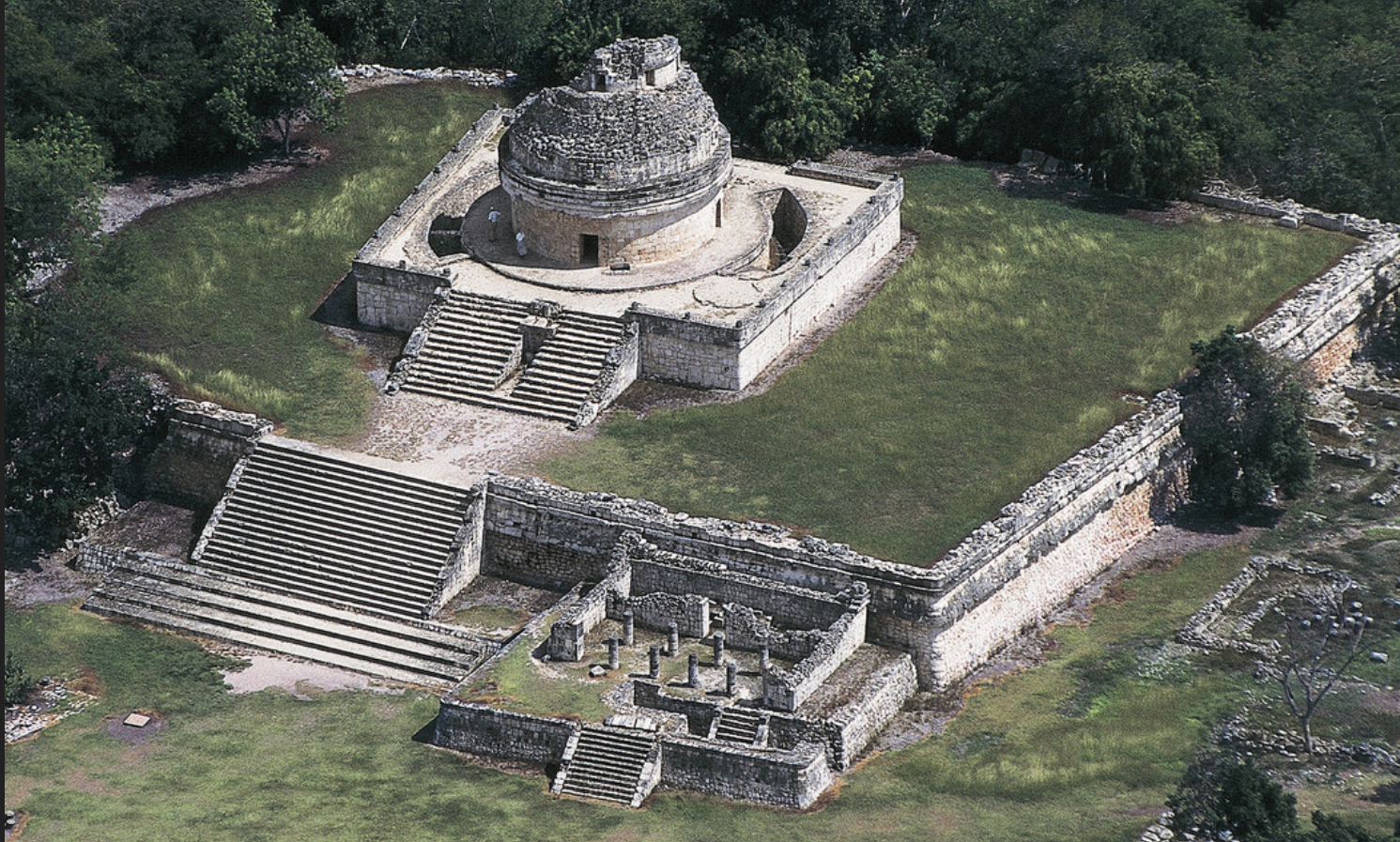
The ‘Observatory,’ Chichén Itzá, Yucatán, c. 800-900 CE (Maya, Mesoamerica)
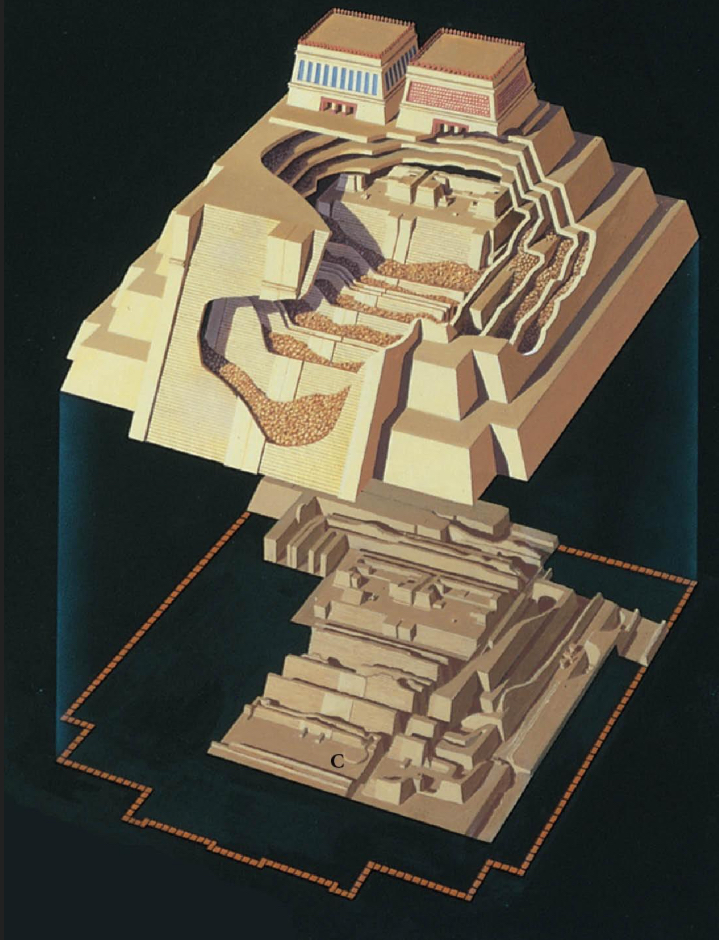
Great Temple (Templo Mayor) of Tenochtitlán (reconstruction/cutaway drawing), Mexico City, c. 1400-1500 (Aztec, Mesoamerica)
the center of the Aztec capitial and now beneath the Cathedral was an elevated platform/pyramid for the two shrines to the God of war and the God of rain
It’s a double temple
the temple was enlarged ovetime
raising temple to the sky
Inspired from Teotihuacán
a religious complex in the heart of Tenochtitlán dedicated to the deities Huitzilopochtli and Tlaloc. It featured impressive pyramids, ceremonial spaces, and was central to Aztec cosmology and rituals.
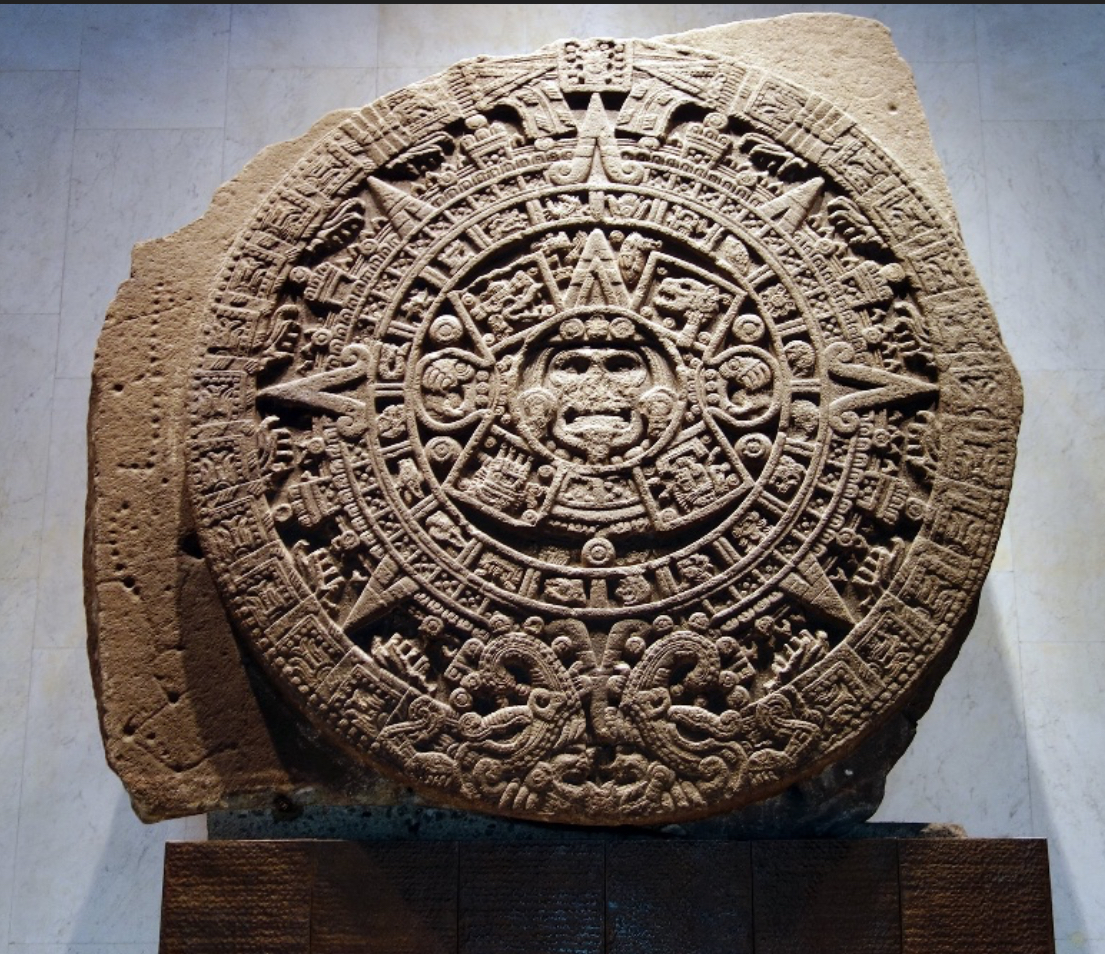
Sun Stone, Tenochtitlán, Mexico, c. 1500 (Aztec, Mesoamerica)
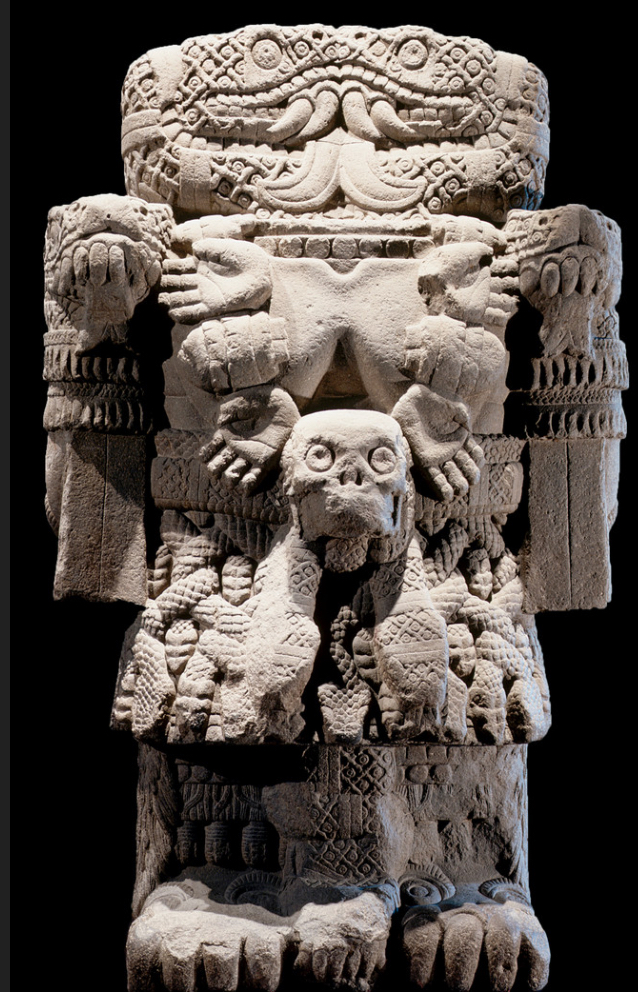
Coatlicue, Tenochtitlán, Mexico, c. 1500 (Aztec, Mesoamerica)
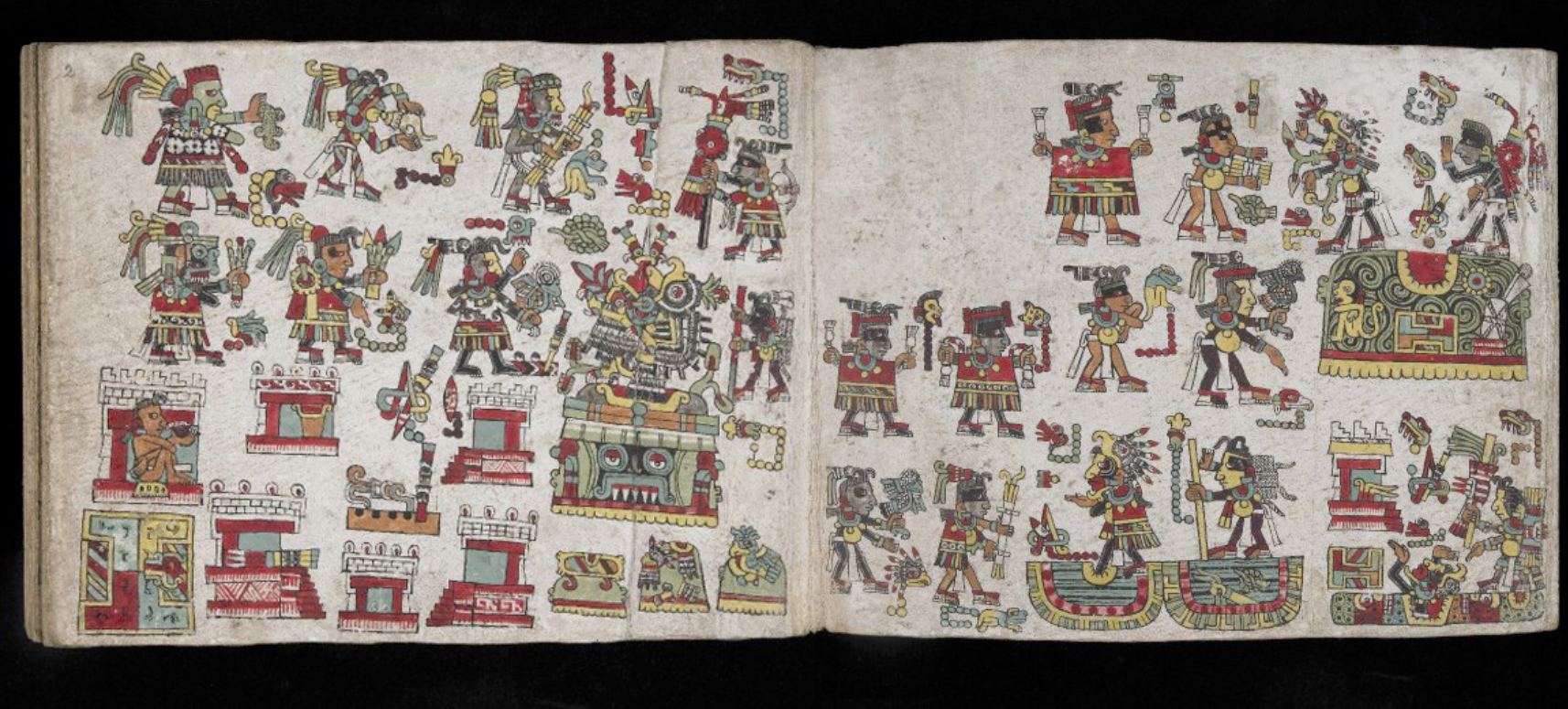
Codex Zouhe-Nuttall, 13th-14th century CE (Mixtec, Mesoamerica)
Mixtec had a writing system
It’s like a history book
One side is the history. When you flip it over you have the history of a person named 8-Deer Jaguar Claw
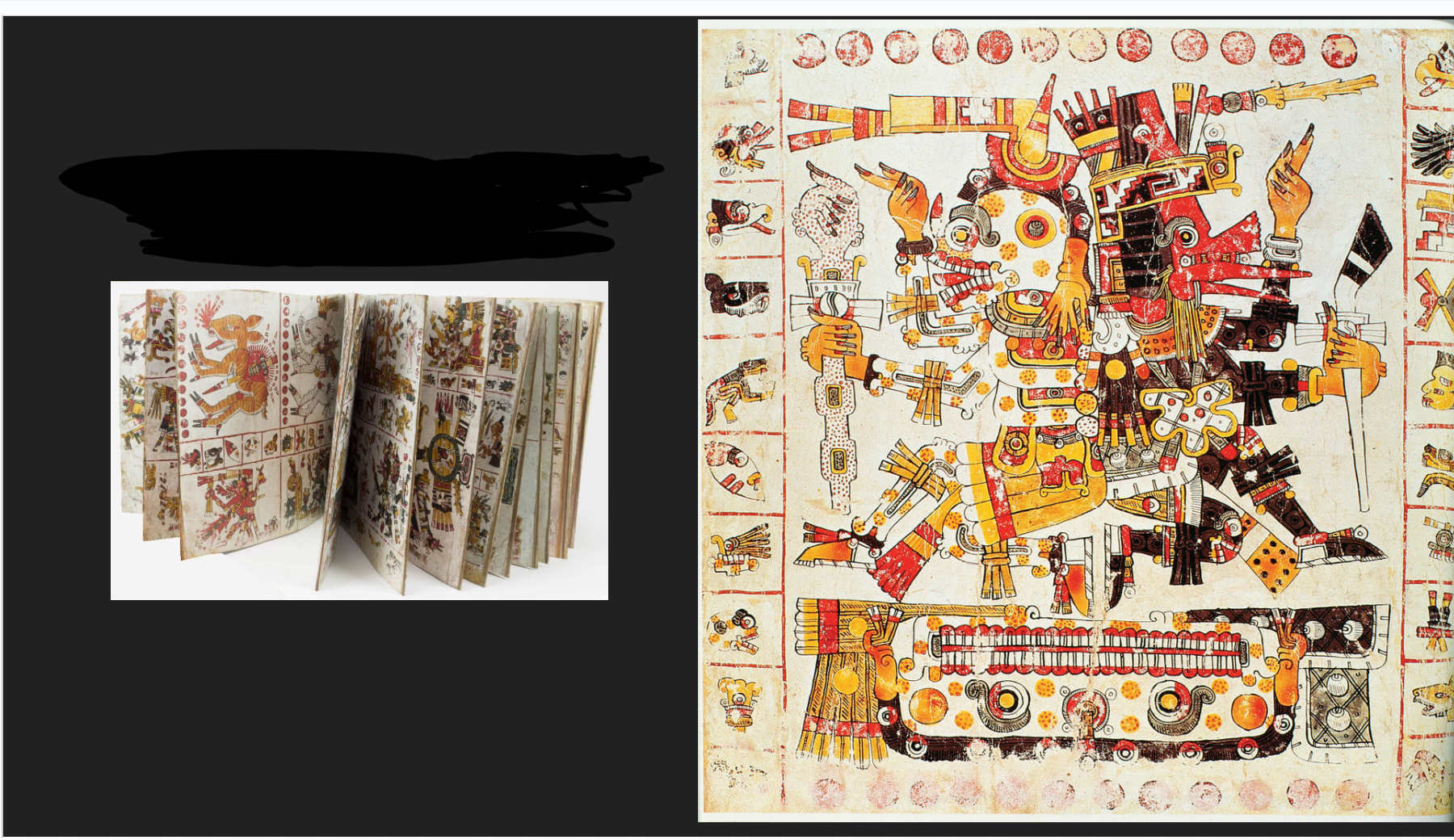
Codex Borgia, 15th century CE (Aztec, Mesoamerica)
these are figures of life and death
so this part is abt how life and death are closely related
pictograph type images and composite images. like the ones we talked abt from the beginning of the semester

Codex Mendoza, frontispiece, 16th-century Mexica (Aztec) (New Spain)
commissioned by Antonio de Mendoza, first viceroy of New Spain
he wanted to document the empire
Indigenous artists did it
In the middle, we see an eagle which is a symbol from the the empire
depicts the city
it’s similar to the maps published with letter of Cortés, Nuremberg, Germany 1524
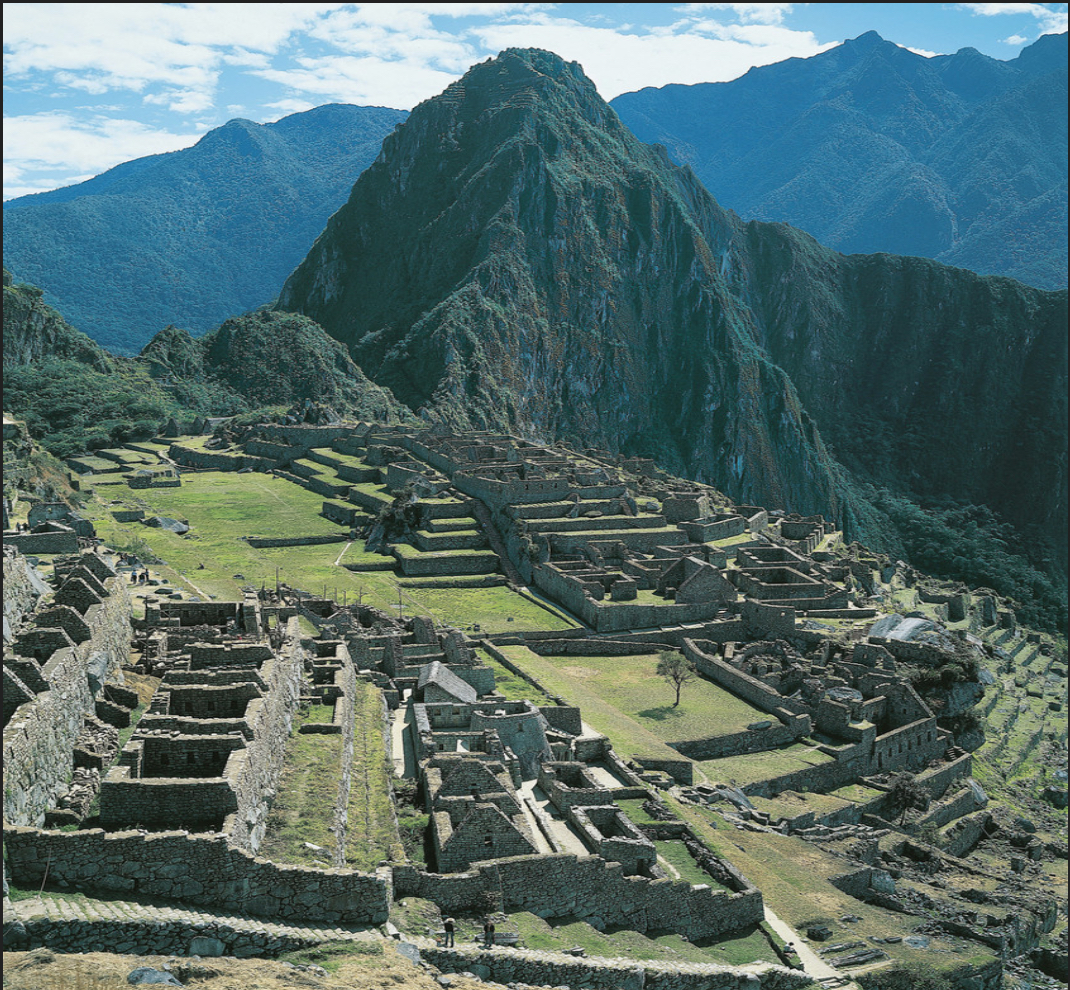
Machu Picchu, Peru, 15th century CE (Inka, South America)
the design of the structures reacts to local landscapes
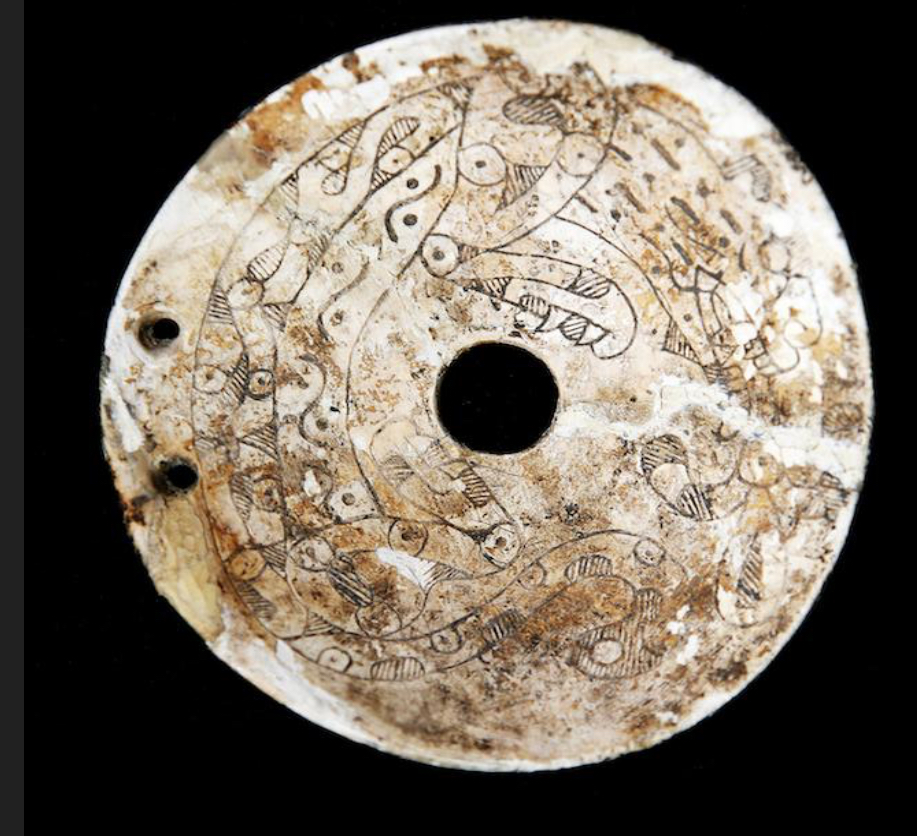
Jaguar Gorget, found in Benton County, MO (first millennium CE, Woodland culture), North America, University of Missouri, Museum of Anthropology
primary animal found on it is a jaguar
jaguar are one of the most powerdul animals for mesoamerican art
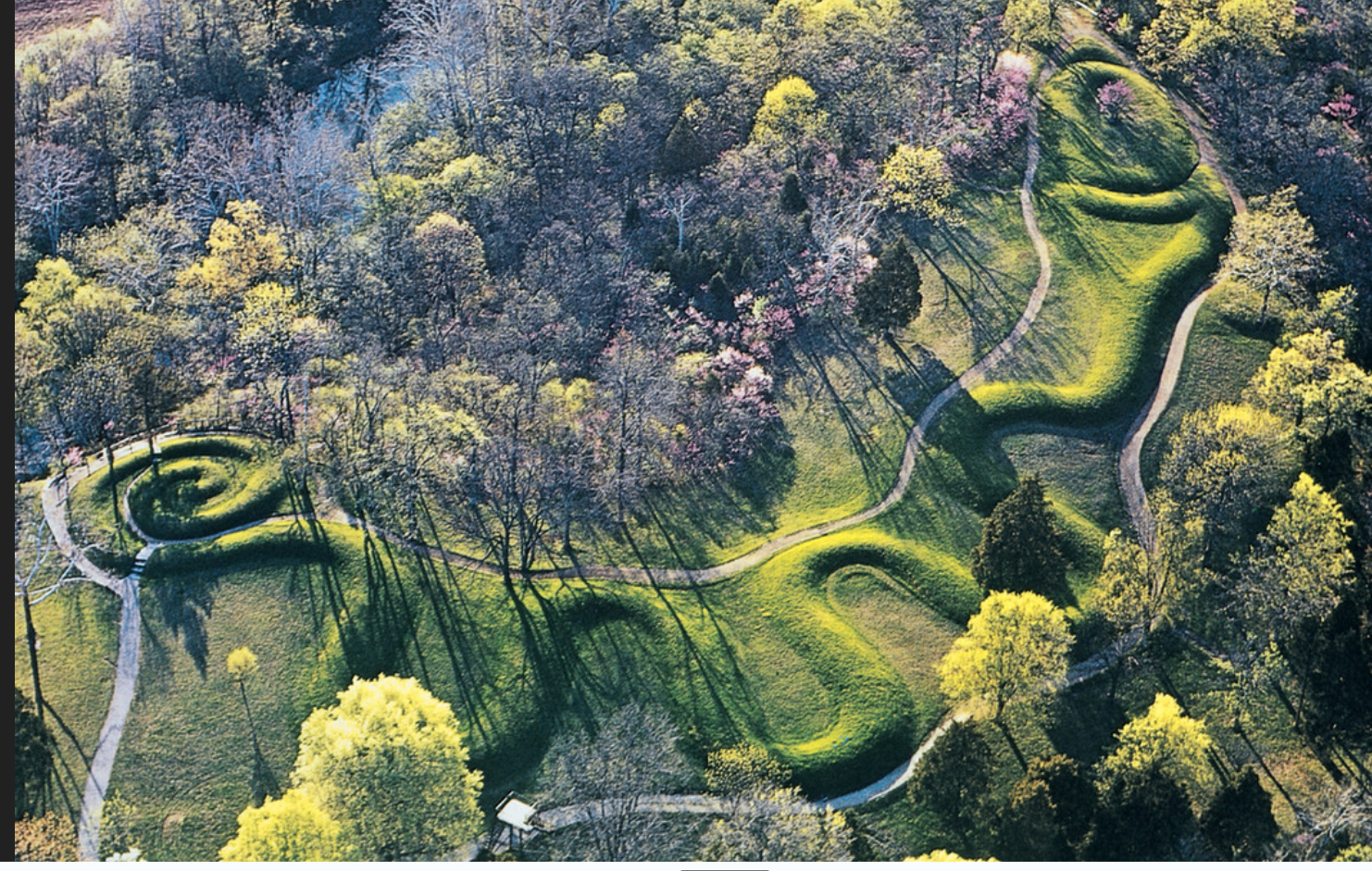
Serpent Mound, Ohio, 11th century CE (Mississippian, North America)
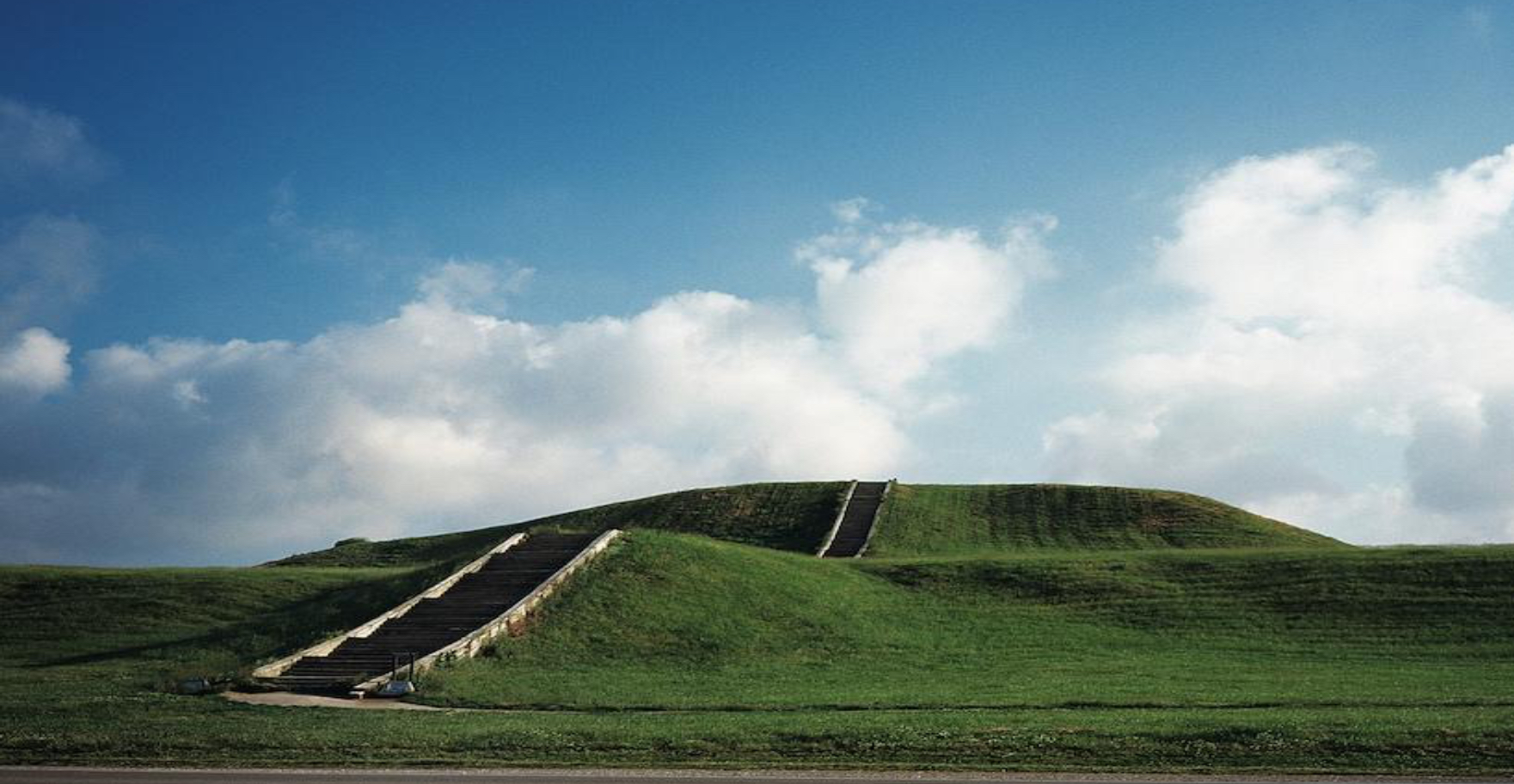
Monk’s Mound, Cahokia, Illionis, 11th-14th centuries CE (Mississippian, North America)
When it was an active site, the city of Cahokia had more ppl in it than London
It was a huge trade network
This is an earthword. pyramid is like grass it’s hill
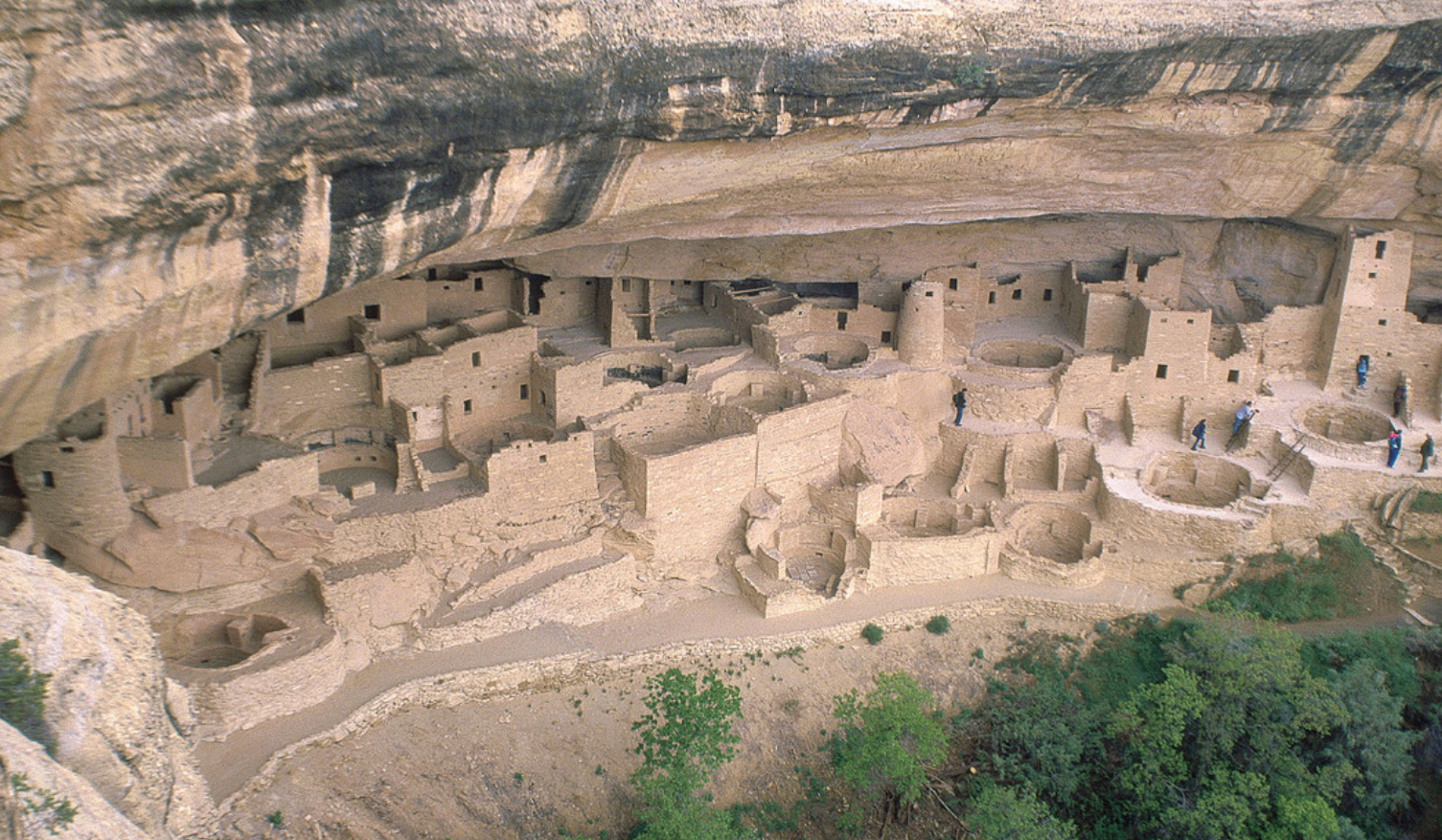
Cliff Palace, Mesa Verde, Colorado, 12th-13th centuries CE (Pueblan, North America)
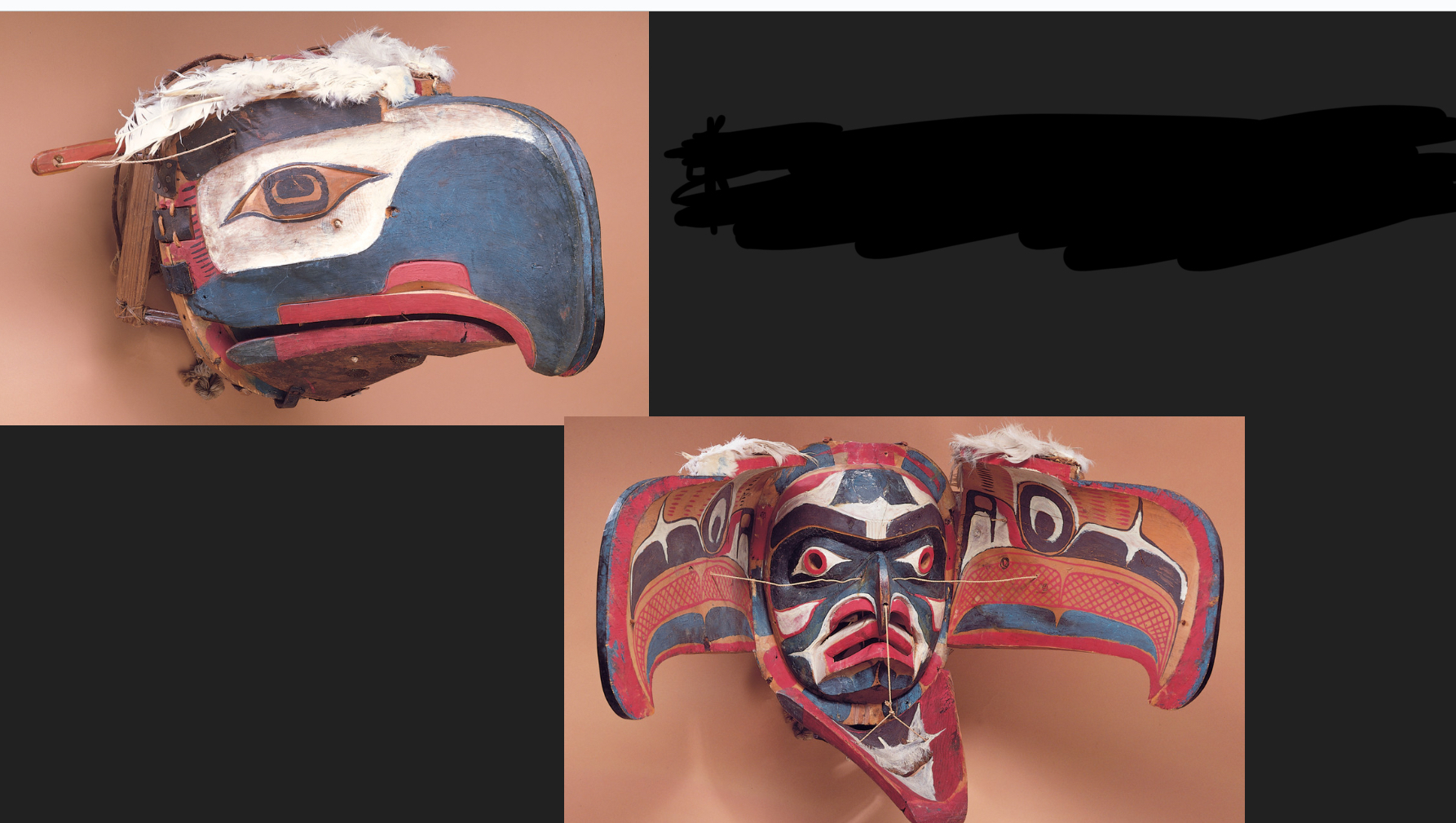
Eagle Transformation Mask, Canada, 19th century (Kwakwaka’wakw, North America)
made to be worn by a mask of a dancer. The dancer could pull a string and the mask would open up and changes
The object was meant to be used
Eagle is a powerful animal
European art didn’t view it the same as the natives
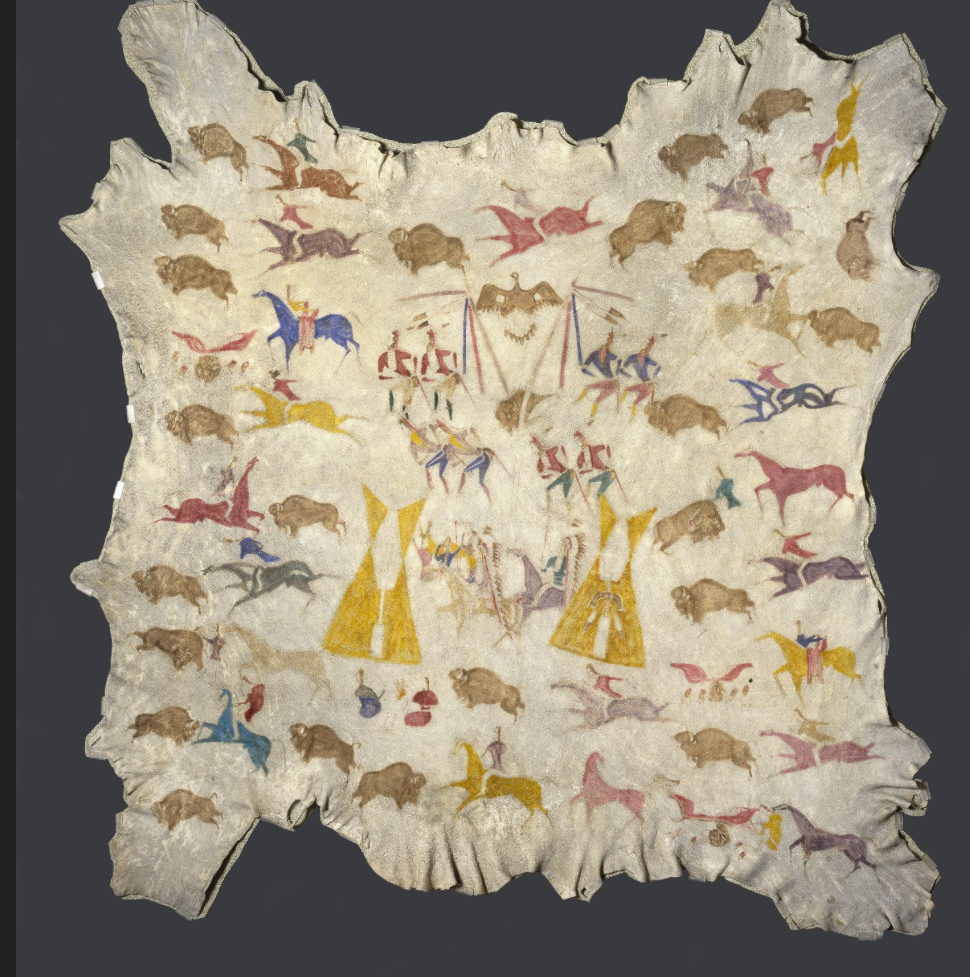
Cotsiogo: Elk Hide, Wind River Reservation, Wyoming, c.1900 (Shoshone, North America)
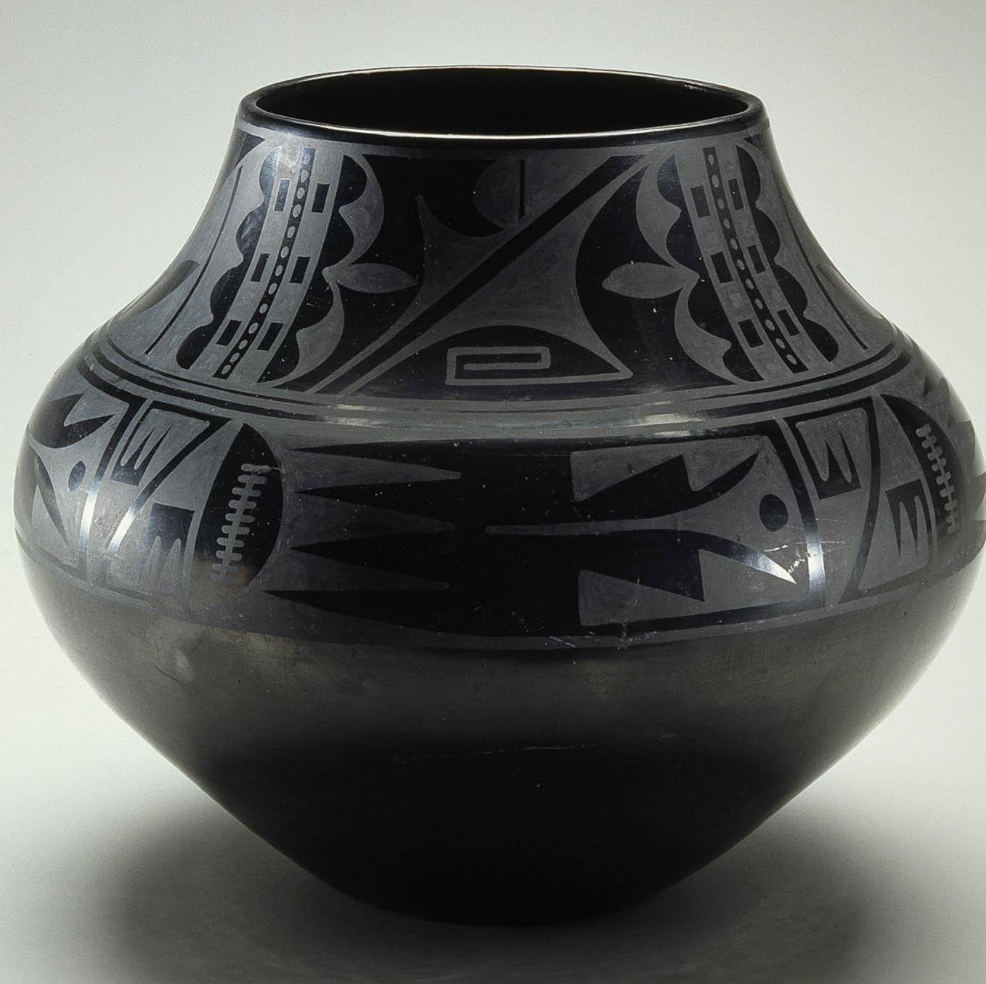
María Montoya Martínez: Blackware jar, New Mexico, c.1940 (Pueblo, North America)
This is blackware poetry
The pattern is made by burning some parts of the clay to create intricate designs. Montoya Martínez was renowned for her pottery, which reflects Pueblo culture and craftsmanship.
Ppl wanted to say they had a original Maria Montoya. She signed her name and all of her neighbors. This is her resisting to European and other not her cultures norms
Europeans/ppl wanted art so ppl like Maria made art for collectors
Aztecs used what type of writing
picture writing instead of alphabetical script, known as glyphs.
What was the Aztecs capitial city
Tenochtitlan, located at the center of a lake